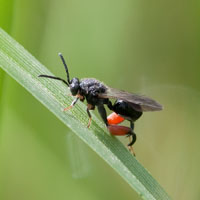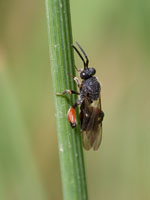
| The superfamily Chalcidoidea is one of the largest groups of parasitic Hymenoptera. Most chalcids are small to very small wasps, often with sculptured integuments giving green, brown, bronze or purple metallic reflections. Most chalcids are parasitoids, although some groups are phytophagous. Chalcids show extreme diversity in their life cycles. They may be extremely polyphagous whilst other species are very host specific; different species may attach any stage of the host; some are ectoparasitoids, others endoparasitoids; they may be primary, secondary, or tertiary parasitoids; and some species are polyembryonic. Due to their often small size, few species are readily photographed in the field. As a result, the photos shown on Natural History Photographs represent a very poor sample of their true diversity. But the few photos I have, do show something of the diversity alluded to. Source: Gauld, I. & B. Bolton, eds. 1988. The Hymenoptera, p. 146 - 180. |
| Eupelmidae: Calosota spec. |
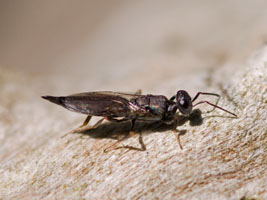 |
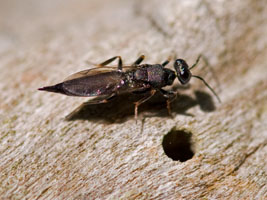 |
| Amsterdamse Waterleidingduinen, the Netherlands; 24 May 2009. Most Calosotinae are parasitic on larvae and pupae of xylophagous beetles. |
|
|
Stratiomys longicornis |
| Authority | : | (Scopoli, 1763) |
| Nederlands | : | Harige langsprietwapenvlieg |
| English | : | long-horned general |
 |
| Erçek Gölü, Türkiye; 10 June 2010. Koinobiont (i.e., host continues to develop following parasitization) parasitoid of Stratiomys. |
| Eucharitidae: Eucharis albipennis |
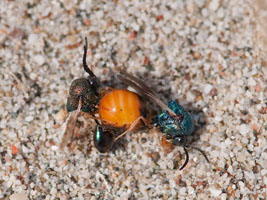 |
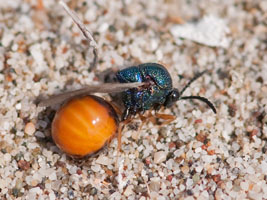 |
| Cumhuriyet (Muğla), Türkiye; 14 June 2012. Koinobiont parasitoid of various ants (Formicidae). |
|
| Eurytomidae: Eurytoma spec. |
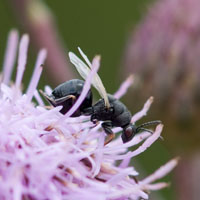 |
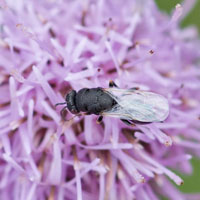 |
| Mesnois (Jura), France; 24 July 2009. Idiobiont parasitoid (i.e., it prevents further development of the host after initially immobilizing it) of insect larvae feeding within plant tissue (Coleoptera, gall-forming Hymenoptera, Diptera (especially Tephritidae), and Lepidoptera. |
|
| Leucospidae: Leucospis dorsigera |
| Nederlands | : | reuzenertswesp |
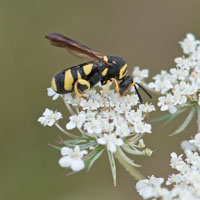 |
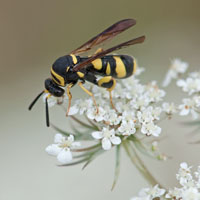 |
| Padirac (Lot), France; 28 July 2012. Leucospidae are ectoparasites of aculeate wasps and bees. As the photos show, the female ovipositor is recurved and lies along the dorsal side of the metasoma, which is a a unique feature. Host species of Leucospis dorsigera are a.o. various bees from the genera Anthidium and Osmia. |
|
| Perilampidae: Perilampus spec. |
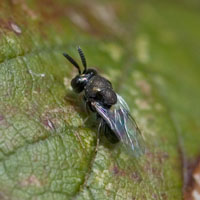 |
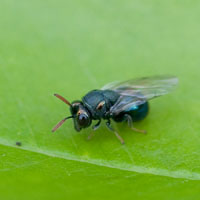 |
| Amsterdamse bos, the Netherlands; 5 April 2009 & 14 May 2010. Many perilampines are hyperparasitic, developing on Tachinid and Ichneumonoid primary parasitoids of Lepidoptera and Symphyta. |
|
